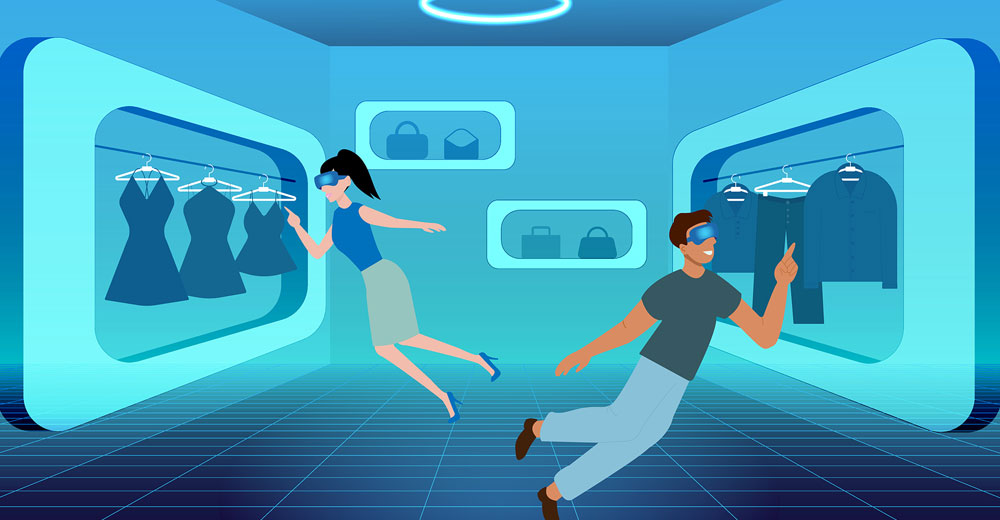Envision wandering through a store, captivated by a deep red cashmere sweater. As your fingers graze its velvety texture, an involuntary smile lights up your face. Suddenly, the price tag shimmers, transforming from a mundane $150 to a dazzling $225! Are you witnessing a pricing illusion?
No, you are part of a potential retail revolution – the era of emotion-responsive pricing. This innovative concept utilizes subtle technology to analyze your emotional reactions to products, dynamically adjusting prices based on your level of interest.
Unraveling the Mystery: What Exactly is Emotion-Responsive Pricing?
This visionary concept, akin to a crystal ball for retailers, utilizes technology to decipher your emotional connection to shopping. This detective work employs various methods:
- Facial recognition: Imagine discreet cameras analyzing your micro-expressions, capturing the subtle twitch of a smile or the hint of a frown as you engage with products.
- Eye tracking: Ever heard of “lovestruck eyes”? This technology monitors your gaze, measuring the duration and intensity of your fixation on products, unveiling subconscious desires.
- Voice analysis: Your enthusiastic “Ooh la la!” upon spotting a dress reveals more than just fashion appreciation. Voice analysis software identifies the emotional tone in your voice, decoding unspoken excitement.
Why Would Stores Adopt this Approach?
The answer is simple: emotions drive sales. Research indicates that emotionally engaged customers are more likely to make indulgent purchases, leading to increased sales and satisfied, repeat business. Imagine securing a deal not due to a sale but because your genuine affection for a vintage record triggered a personalized price drop – a shopping experience like no other!
Decoding the Pricing Wizardry: How Does it Work?
Stores invest in emotion-tracking technology, funneling the data into sophisticated algorithms. These algorithms, resembling retail Robin Hoods, redistribute value by raising prices on highly coveted items (imagine that dreamy cashmere sweater) and lowering them on those generating less emotional buzz. This dynamic interplay between desire and price tag has the potential to revolutionize the retail landscape.
Where Can We Anticipate this Emotional Rollercoaster in Action?
The possibilities are as diverse as the shopping experience itself:
- Luxury stores: Picture exclusive boutiques where the prices of diamond bracelets adjust based on your awestruck gaze, creating a truly personalized treasure hunt.
- Discount stores: Envision bargain havens where prices drop as you excitedly discover an unexpected gem, turning thrifting into an exhilarating game of emotional strategy.
- Online retailers: Visualize personalized websites where algorithms curate recommendations based on your past browsing history and real-time emotional responses, making online shopping remarkably intuitive.
Is this Sci-Fi or Retail Reality?
While fully-fledged emotion-responsive pricing may still be on the horizon, early adopters are exploring its potential. Companies like NeuroFocus, a neuromarketing firm, employ facial recognition to gauge ad effectiveness, paving the way for emotional targeting in pricing strategies. The future appears to be brimming with personalized price tags attuned to your desires.
But, Ethical Concerns Linger…
As with any potent tool, ethical considerations are paramount. Concerns about manipulation loom large: what if stores exploit our deepest desires, inflating prices on coveted items, capitalizing on emotional vulnerabilities? Privacy anxieties echo too: will our every smile and sigh be meticulously tracked and monetized? These are vital questions that demand careful consideration as this technology evolves.
The Final Verdict: A Love Story Between Retail and Emotion?
Emotion-responsive pricing, with its potential to personalize and revolutionize our shopping experiences, is undeniably intriguing. However, ethical implications call for vigilance. Let’s ensure this retail love story unfolds with transparency, fairness, and respect for consumer privacy. Only then can this emotional pricing tango truly become a win-win for both retailers and shoppers.
Remember, this is just a glimpse into the possibilities of emotion-responsive pricing. As technology advances and ethical frameworks are established, this concept may become a reality that shapes the future of retail. So, the next time you find yourself in a store, keep an eye out – your emotions might just be influencing the price tags!




